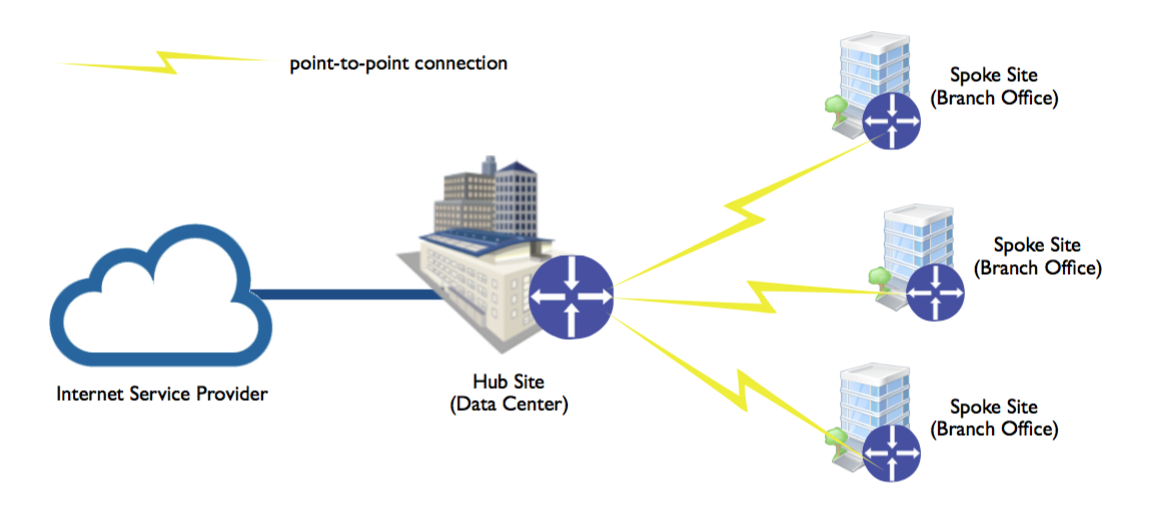What is a WAN?
The easiest way to think of a WAN or Wide Area Network is that a WAN operates beyond the geographic scope of a LAN. WANs are used to interconnect the enterprise LAN to remote LANs in branch sites. Without WANs, LANs (local area network) would be a series of isolated networks. LANs provide both speed and cost-efficiency for transmitting data over a local area such as an office building or small campus. However the minute your business grows and expands to other geographic locations such as across town, in neighboring towns or even into other states or countries your network will require communication among geographically separated sites. Regional or branch offices that need to be able to communicate and share data with a central site.
Its not feasible to connect computers across the country or around the world with your own physical cables so technologies have been developed by telecom carriers to support this communication requirement.
WAN Topologies
- Point to Point - Point to point topologies connect sites by placing a private carrier circuit between two locations and provides layer 2 service through a provider network. This connection is transparent to the end user.
- Hub and Spoke - A hub and spoke topology is a more efficient and cost effective way to have multiple branch locations point a circuit back to the central location without the need for point to point circuits between all the locations. In a Hub and spoke technology all "spoke sites" can be interconnected through the hub site using virtual circuits and routed sub-interfaces at the hub. All sites have a single circuit pointed to the hub and then routes can be configured to allow a spoke site to talk to other spoke sites as well as the central hub.

- Fully Meshed - One disadvantage of a hub and spoke topologies is that all communication has to go through the hub which can become a bottleneck if not scaled sufficiently and affect performance. In a fully meshed topology such as MPLS using virtual paths any site can communicate directly with any other site. Every site has a path to the central site as well as paths to individual sites. Fully meshed networks can also be deployed as Dual Homed providing redundancy by placing a secondary router at the central location with all the same paths so that if the primary fails the secondary takes over and provides backup connectivity.
- VPN - VPN or virtual private network is kind of misleading by name as it using a public network for transport, namely the Internet. A VPN uses encryption protocols such as IPSec, Tunneling Protocol, SSL Secure Socket Layer etc to encrypt your traffic so that it may travers the Internet in order reach the central location or server for connectivity and data sharing. VPN is popular in some networks because its cheap to get an internet circuit compared to a private MPLS or Ethernet circuit. The disadvantage is the Internet fluxuates in performance and is not secure. There is always the potential for hackers to get your traffic. Also it is hard to physically manage firewalls at every individual location in order to create the VPN. SD WAN technology is greatly improving this by moving the decision making software to a cloud controller rather than on the SD WAN firewall itself. This allows an administrator to manage locations remotely.
Wide Area Networks expand the LAN and bridges branch locations across geographic barriers. More and more software systems are deployed by businesses to run payroll, manage employees, track transactions, allow centralized voice communications etc and Wide Area networks serve an important role in keeping businesses connected.


